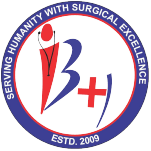
Rhinoplasty
Rhinoplasty
Understanding Rhinoplasty: Enhancing Facial Harmony and Function
Rhinoplasty, commonly referred to as a “nose job,” is a surgical procedure designed to reshape and enhance the aesthetic appearance of the nose. Beyond cosmetic improvements, it can also address functional issues, ultimately enhancing facial harmony and improving breathing capabilities.
Purpose of Rhinoplasty
- Aesthetic Enhancements: Rhinoplasty aims to enhance facial symmetry and balance by reshaping the nose, addressing concerns such as a dorsal hump, asymmetry, or irregularities in shape and size.
- Functional Improvement: Besides cosmetic alterations, rhinoplasty can rectify structural abnormalities that hinder proper breathing, such as a deviated septum or enlarged turbinates.
Rhinoplasty Techniques
Rhinoplasty encompasses various techniques tailored to meet the individual’s specific needs and desired outcomes. The two primary approaches are:
Open Rhinoplasty: This technique involves creating a small incision across the columella (the tissue between the nostrils) and provides the surgeon with better visibility and access to intricate nasal structures. It’s beneficial for complex procedures requiring extensive modifications.
Closed Rhinoplasty: In this method, incisions are made within the nostrils, avoiding external scarring. While it limits surgical access compared to open rhinoplasty, it’s suitable for less complex procedures that don’t necessitate significant alterations.
Indications for Rhinoplasty
- Cosmetic Concerns: Addressing aesthetic issues like a crooked nose, disproportionate size, wide nostrils, or nasal asymmetry.
- Functional Complications: Correcting breathing difficulties caused by structural abnormalities, chronic congestion, or a deviated septum.
Selecting a Qualified Rhinoplasty Surgeon
Choosing a qualified and experienced surgeon is pivotal for successful rhinoplasty outcomes. Factors to consider include:
- Certification and Expertise: Confirm that the surgeon is certified by accredited boards and specializes in facial plastic surgery or otolaryngology.
- Experience and Portfolio: Reviewing before-and-after photos of previous procedures to assess the surgeon’s skills and understanding of diverse patient needs.
- Patient Consultation: An essential step where the surgeon evaluates the patient’s concerns, discusses achievable outcomes, and educates on the procedure and recovery.
Benefits and Considerations
Benefits of Rhinoplasty:
- Improved facial proportions and symmetry.
- Enhanced self-confidence and self-image.
- Resolution of breathing difficulties for better quality of life.
Considerations and Limitations:
- Realistic expectations regarding the final results and post-operative recovery.
- Potential risks and complications associated with any surgical procedure.
Rhinoplasty is a personalized surgical intervention that not only enhances the aesthetic appearance of the nose but also addresses functional issues, promoting facial harmony and overall well-being. It is imperative to consult a qualified surgeon to discuss individual goals, expectations, and determine the most suitable approach for a successful outcome.
